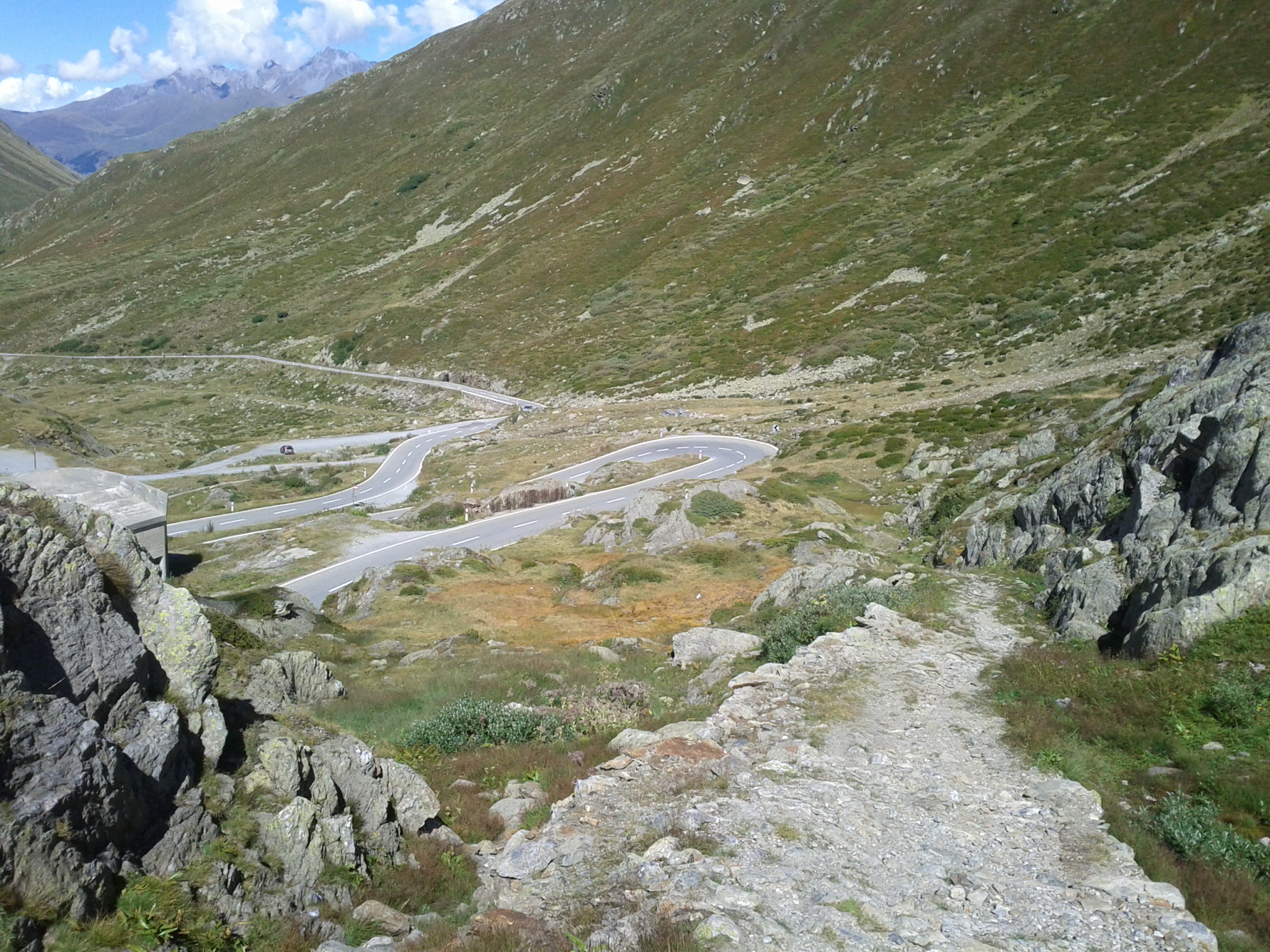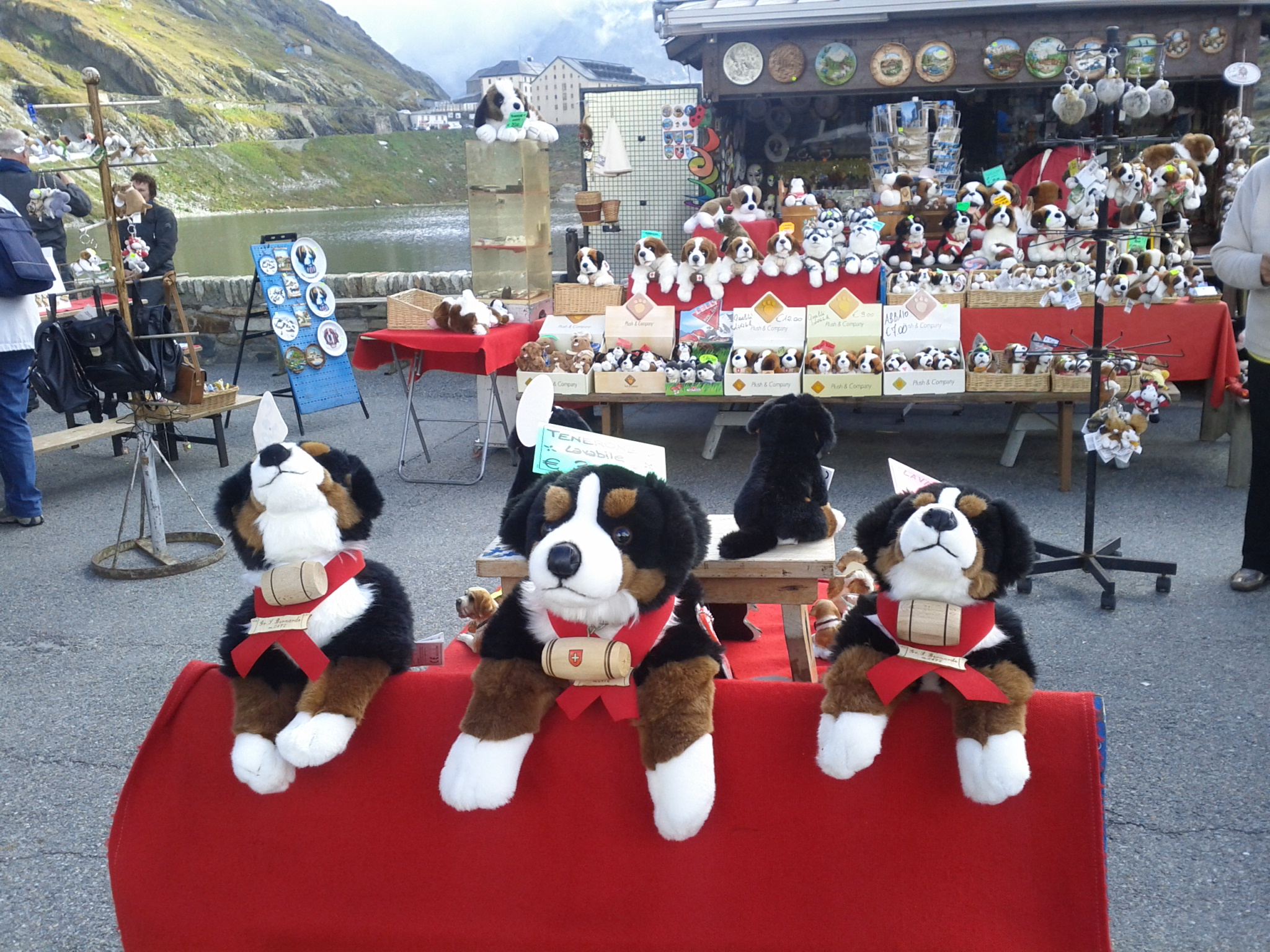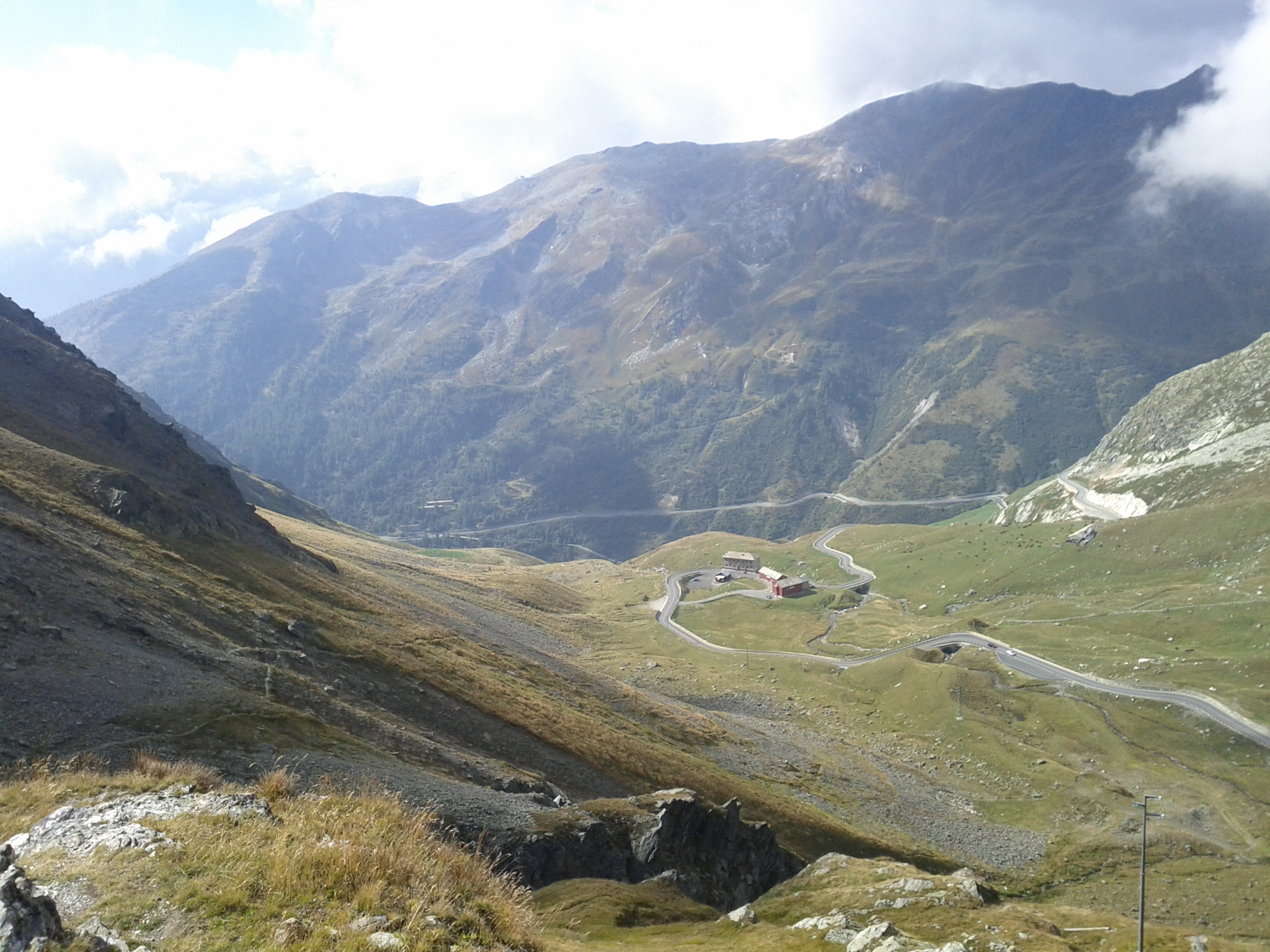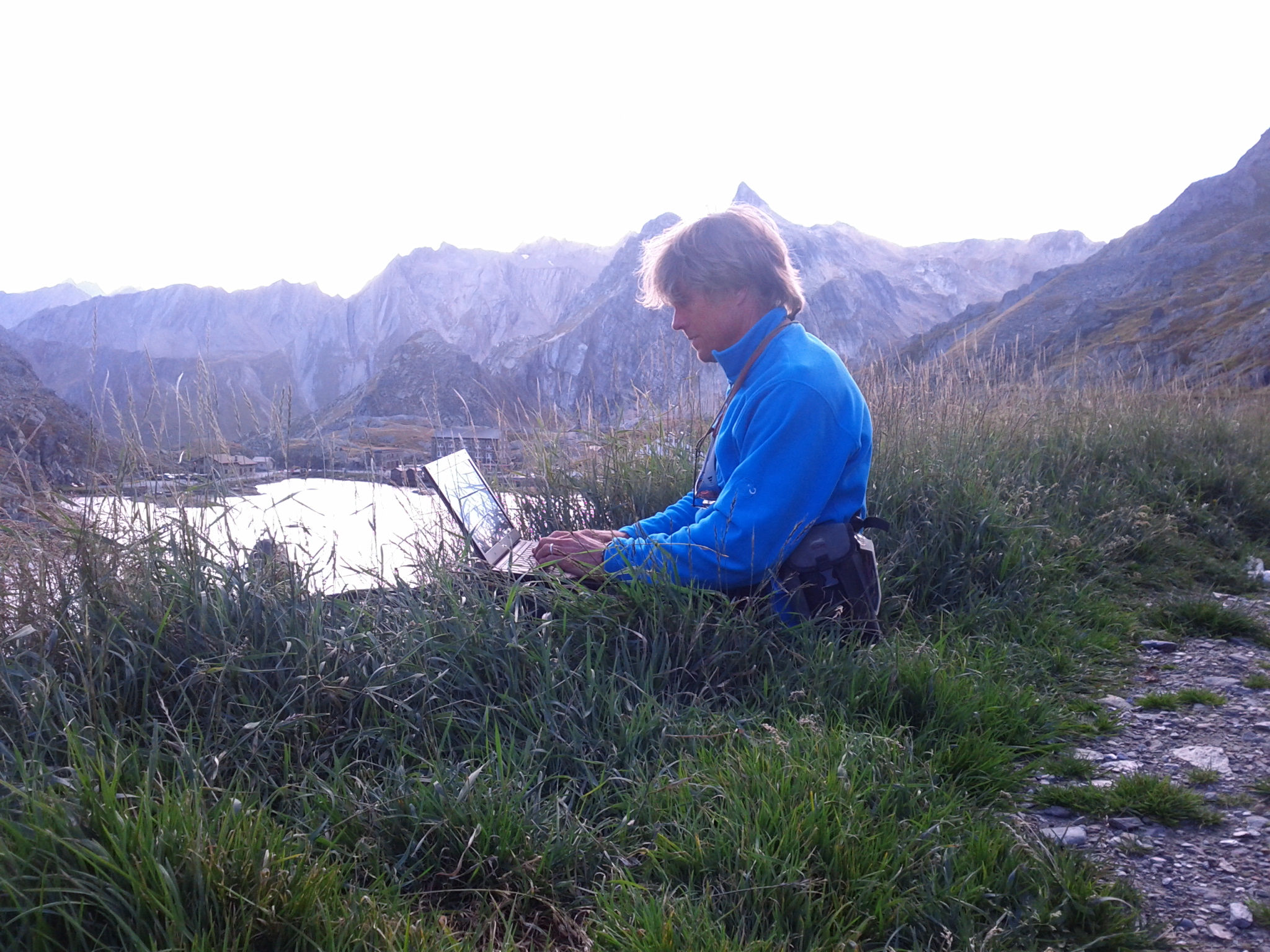Warriors, Dogs and a Saint
It seems ironic that the pass named for a saint – more than that, the official patron saint of the Alps – makes the history books primarily for the passage of warriors. And dogs.
I walked up to Grand St Bernard from Bourg St Pierre along the old Roman road, a route that served Celtic tribes on their way to take Italy (or rather, portions of what we now call Italy) way back in 390 BC.
The Romans built a real road to provide more efficient passage during their conquest of the northern side of the Alps during Caesar’s reign. But most of the local attention goes to Napoleon, who took some 46,000 men over the pass plus his heavy artillery on his way to reconquering Italy, which had recently been reclaimed by Austria following an earlier conquest by Napoleon.
Somehow I have trouble squaring all this nastiness with scenery so sublime, but there aren’t many options for getting from one side of the Alps to the other.
At 2,469 meters, the Great St Bernard Pass is the third highest road in Switzerland and the oldest known pass over the Western Alps. Artifacts have been found from the Bronze Age and every period since.
This makes sense as the terrain on the northern (Swiss) side that I walked up is exceptionally gentle by Alpine standards. Big peaks rise to each side, but the route to the col miraculously slips right past them. On the Italian side it drops a bit more steeply, but it is still amazingly simple terrain – by Alpine standards, of course.
I spent the last two nights in great comfort at the two important Swiss ends of the passage. The lower was nearly the top of the forest line, at Bourg St Pierre, where Napoleon camped with his 46,000 men. They took all the food this small hamlet could possibly provide (I have no idea how the village supplied it) and then left without paying the bill.
Roughly 200 years later the village added up the costs including interest and presented a fresh bill to the French government. They ended up settling for a plaque commemorating the event.
The upper end is the pass itself, where we slept in the hospice founded by St Bernard himself in 1049. He and his monks wanted to help free the pass from thieves who preyed upon travelers. This evolved into rescue missions to help voyagers stuck in snowdrifts and other hard times. The huge dogs now known as St Bernards were bred to plow through the snow as they helped the desperate to reach safety.
As is so common in the Alps, the modern road passes all difficulties by tunneling under them, and the only people to come to the actual pass these days are sightseers and motorcyclists, who love the twisty switchbacking roads. Souvenir stands filled with stuffed dogs line the road, and for ten Swiss francs you can pet a real dog.
It’s a beautiful spot, but far more crowded than I’m used to. John and I have paused here briefly for me to do a short Q&A session on Facebook with a few people who have been kind enough to join me (virtually) on this voyage and to wait for a few friends who will join me in real life for the final three days.
On Monday we reach the summit of Mont Dolent, the symbolic end of this incredible journey, though the real end happens later in the afternoon when we reach the road and my long march comes to a close.







You can find an overview of ongoing debates with our journalists here . Please join us!
If you want to start a conversation about a topic raised in this article or want to report factual errors, email us at english@swissinfo.ch.